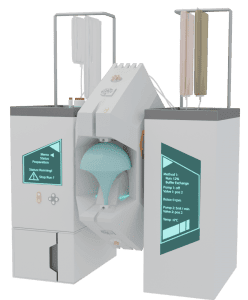
An in-situ centrifugation-based point-of-care system could help push industry towards the decentralized and automated model needed to make cell therapies affordable and reliable, according to Limula Biotech.
The approval of Novartis’ Kymriah (tisagenlecleucel) in 2017 was a milestone in the advanced therapy space, marking the arrival of the first genetically-modified autologous T-cell immunotherapy to the market.
Since then, a handful of other autologous cell therapies have received the regulatory thumbs up – most recently Bristol-Meyer Squibb’s Breyanzi (liso-cel) and Abecma (ide-cel) – but despite CAR-T heavy pipelines (the Alliance for Regenerative Medicines says there are more cell-based immune-oncology therapies in industry-sponsored trials than another advanced therapy type), the floodgates are still a long way from opening fully due in considerable part to the complexities and cost of manufacturing these personal medicines.

“Manufacturing is widely recognised as the number one problem to solve for patient access, and there is already a shortage of manufacturing capacity and skills in the field,” says Luc Henry, CEO and founder of Limula Biotech. “As these amazing treatments advance towards market approval, there will be a necessary demand for those who provide reliable and scalable approaches to turn these scientific and medical breakthroughs into market success.”
Swiss cell and gene therapy (CGT) manufacturing platform firm Limula began talking to clinical researchers working on novel chimeric antigen receptor (CAR) T cells in 2018 about these issues.
“They complained there was no robust method to produce high-quality cell products in quantities sufficient for clinical trials,” Henry tells BioProcess Insider. “Transfer of manual methods to automation seemed an obvious path towards standardization. It is exciting to see how many players have advanced this field since we started. We see this competition as a proof that we are onto something.”
Numerous firms including Ori Biotech, Lonza, Aglaris, and Autolous have touted the importance of standardized, automated, and closed systems, but the move from a centralized and manual model is yet to have been realized and the sector continues to suffer, says Henry.
“Some autologous cell therapy projects reach clinical validation points, but do not have a large enough patient population to justify the investment in the infrastructure currently required for production. Promising therapies have been de-prioritized or cancelled solely on commercial, not clinical efficacy grounds.
“As an industry we need tools that allow for lower costs points to give freedom to therapy developers to reach the market.”
Limula thinks it may offer a solution through its manufacturing platform using a bioreactor design it claims will enable efficient production of cell products in a closed, and automated fashion.
“Our IP is based on the principle of in-situ centrifugation, a design function that allow us to combine cell expansion, gene transfer, wash, and formulation steps all in a single container without ever transferring the cells from one device to another. We have reasons to think that less and more gentle cell manipulations leads to products of higher quality,” Henry says.
While the technology is still in development, Henry believes Limula has the opportunity to take its customers’ requirements into consideration.
“Lack of scalability at acceptable costs is a major roadblock towards widespread adoption and commercial viability of an autologous cell therapy. We want to provide our customers with a means of encoding their know-how in a device that can replicate their process with minimal variability between different batches, different operators in different locations,” he says.
“We are in conversation with therapy owners who understand that CMC need to be addressed as early as possible in the therapy development – ideally even tested in the context of Phase I to ensure scalability by the time the therapy is moving into the following larger trials.
“Ultimately, our partnerships with cell therapy developers will open up new possibilities for them: moving therapy production closer to the patient, simplified supply chain, lower grade clean room infrastructure, all to reduce the overheads and risks associated with cell therapy manufacturing.”
About the Author
You May Also Like

schedl_b_and_w.jpg?width=100&auto=webp&quality=80&disable=upscale)
schedl_b_and_w.jpg?width=400&auto=webp&quality=80&disable=upscale)



